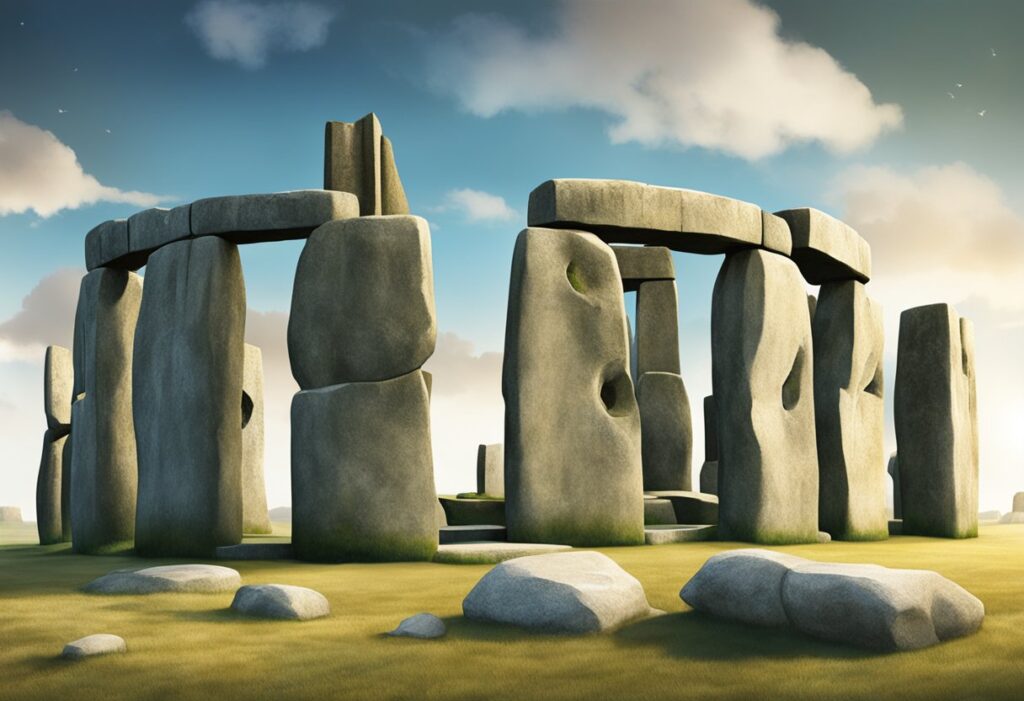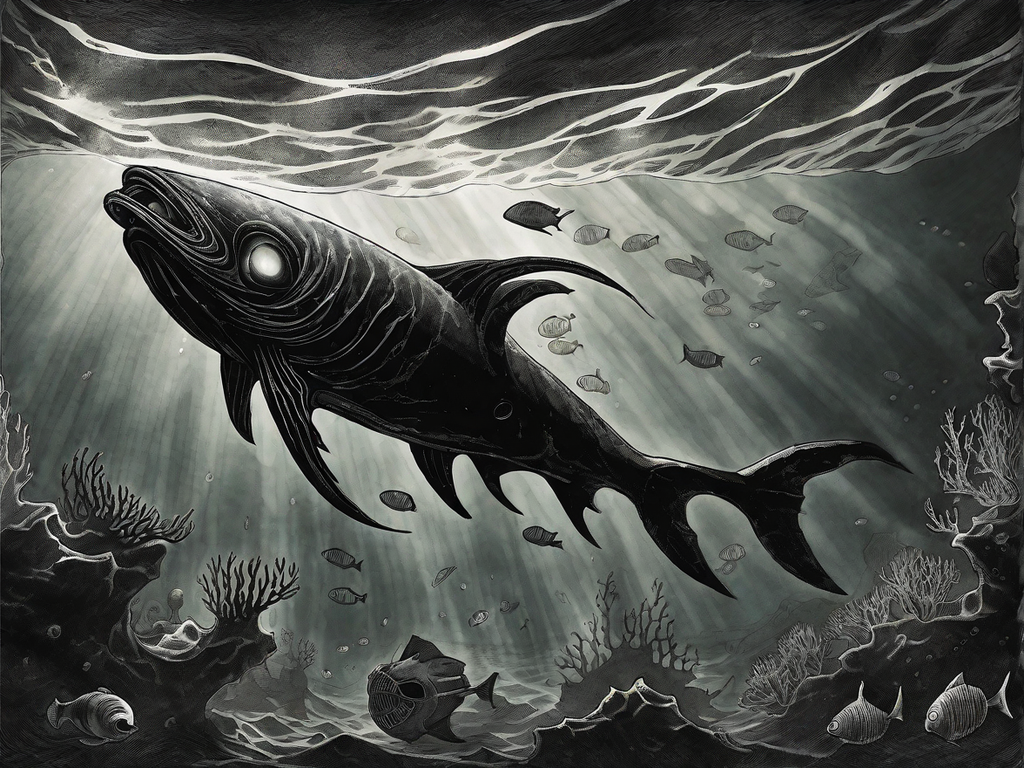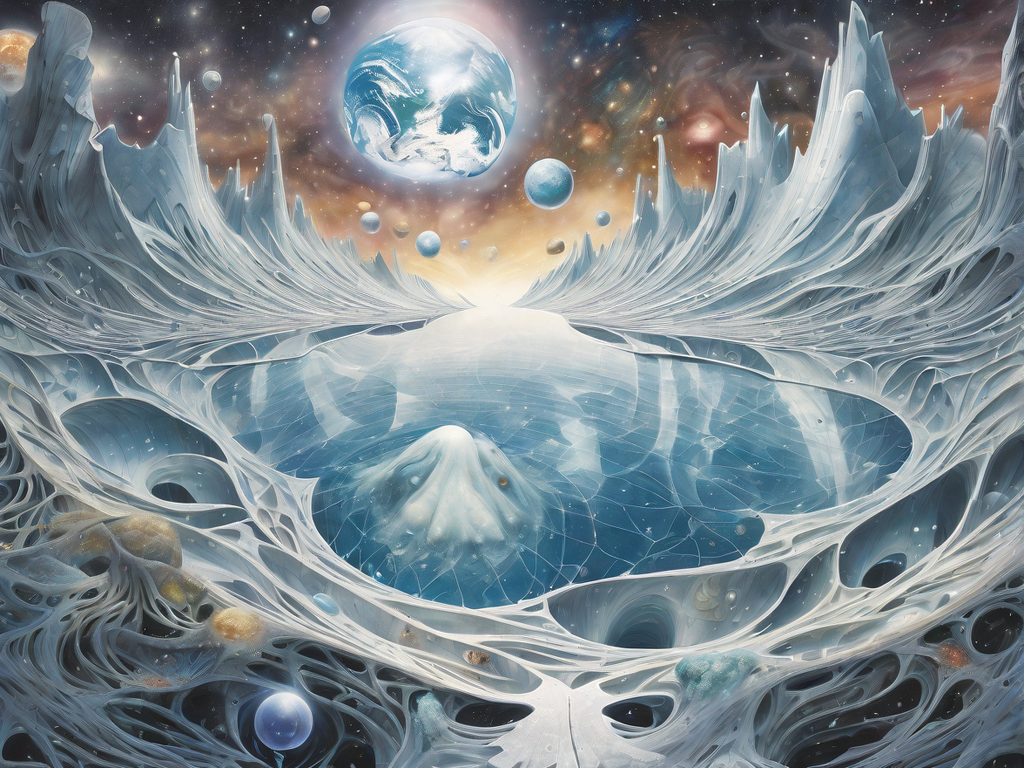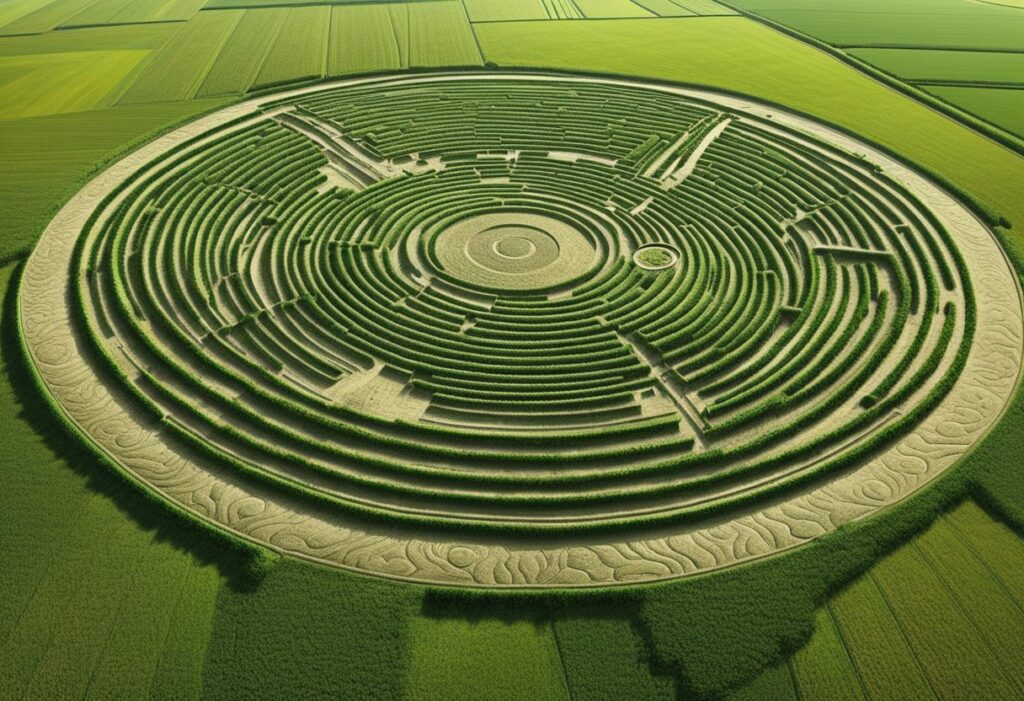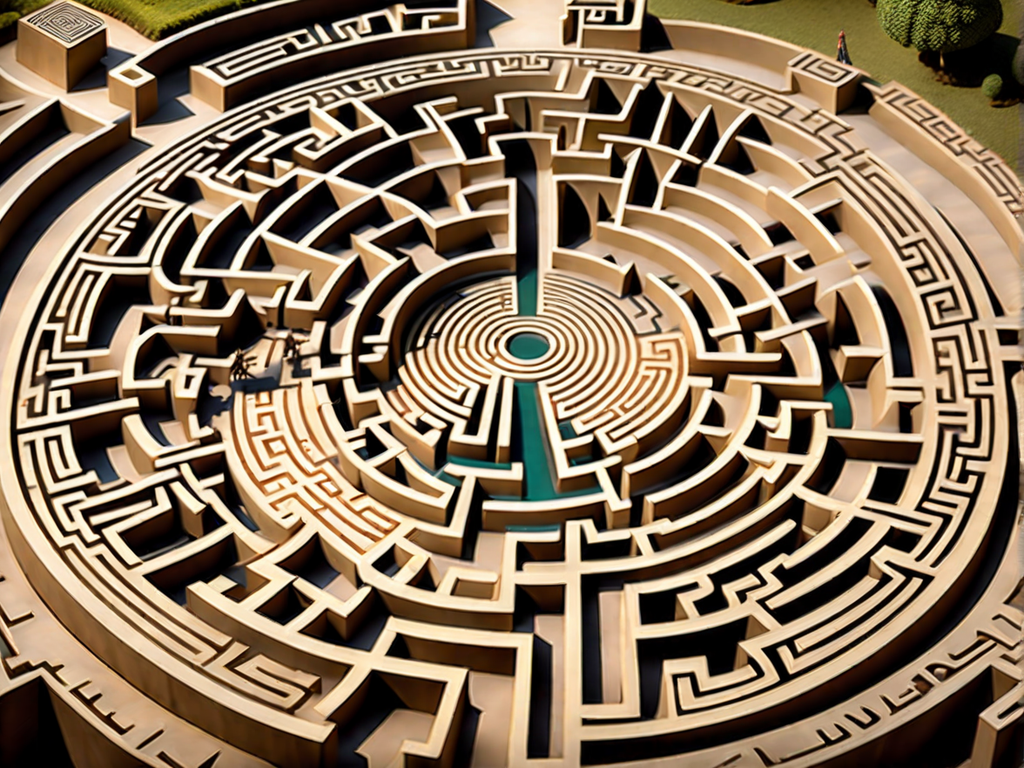Delve into the mesmerizing realm of the underwater art world, where creativity and nature blend seamlessly. Submerged art installations, scattered across the ocean floor, captivate both artists and viewers with their ethereal beauty. These underwater sanctuaries provide a unique canvas for artists to create awe-inspiring sculptures that harmoniously coexist with marine life.
In the depths of the ocean, the underwater art world reveals its wonders. From coral reefs to deep-sea canyons, these submerged art installations serve as a sublime invitation to explore beneath the waves.
“The ocean stirs the heart, inspires the imagination, and brings eternal joy to the soul.” – Wyland
Underwater artists experience a deep connection with their surroundings, drawing inspiration from the fluidity of movement and the vibrant colors of marine ecosystems. Through their creations, they give voice to the hidden treasures of the ocean, transforming a dive into an immersive art experience.
These submerged art installations not only evokes a sense of wonder but also raise awareness about the fragile beauty of our marine environments. By bringing art beneath the waves, artists and viewers alike are reminded of the importance of conserving and protecting our oceans.
Captivating the Senses: Experiencing Submerged Art Installations
Imagine swimming through an underwater gallery, surrounded by sculptural masterpieces. The art world beneath the waves offers a truly unique and enchanting experience. As you explore these hidden treasures, each artwork reveals its story, inviting you to dive deeper into the mysteries of the deep.
An underwater sculpture garden awaits, an ethereal world filled with wonder and bewilderment. These mesmerizing installations create an immersive experience, captivating the senses and igniting the imagination.
Securing a Glimpse: Famous Submerged Art Installations
Across the globe, artists have left their mark on the underwater art world with iconic sculptures that have become renowned landmarks. From Jason deCaires Taylor’s hauntingly beautiful creations beneath the waters of Cancun’s MUSA Museum to Andreas Franke’s surrealistic photographs adorning sunken ships, each installation offers its own unique narrative.
Take a moment to explore some of the famous underwater sculptures that have captivated audiences worldwide:
| Artist | Installation | Location |
|---|---|---|
| Jason deCaires Taylor | The Silent Evolution | Cancun, Mexico |
| Andreas Franke | The Sinking World | Florida Keys, USA |
| Isaac Cordal | The Sculptures on the Shoreline | London, UK |
| Doug Aitken | Underwater Pavilions | California, USA |
Each of these submerged artworks invites viewers to explore the intersection of art and nature, embracing the depths as a canvas for expression and contemplation.
Unveiling the Masterpieces: Famous Underwater Sculptures
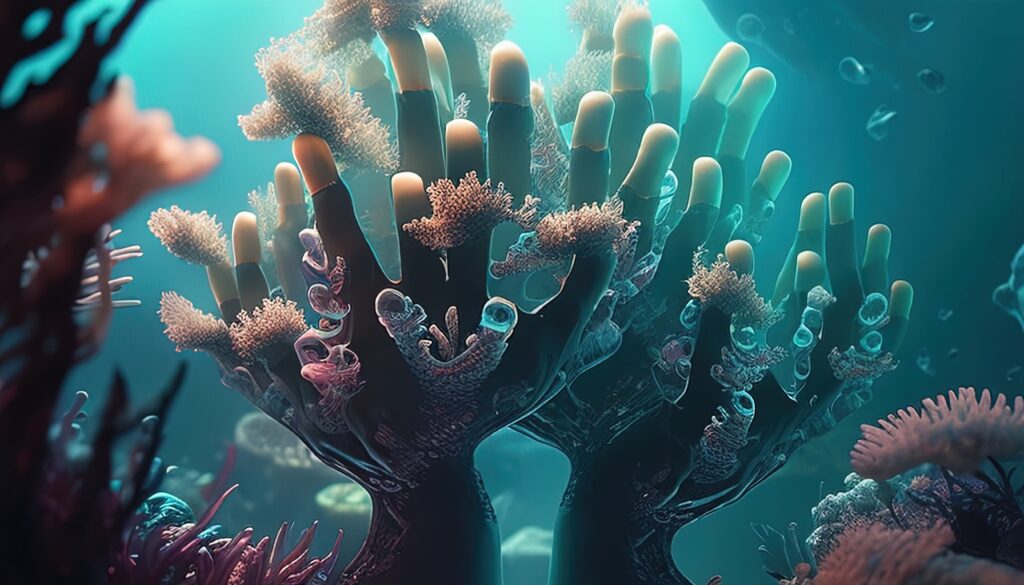
Immerse yourself in the mesmerizing world of underwater sculpture gardens, where art and nature unite to create awe-inspiring masterpieces that captivate the imagination. In this section, we dive into the depths to explore some of the most famous underwater sculptures from around the globe, crafted by visionary artists who have left an indelible mark beneath the waves.
The Molinere Underwater Sculpture Park, Grenada
One of the most iconic submerged art destinations, the Molinere Underwater Sculpture Park in Grenada showcases the genius of British artist Jason deCaires Taylor. His sculptures, crafted from eco-friendly materials, serve as a stunning testament to the relationship between art and marine life. From “The Vicissitudes,” a circle of young children holding hands, to “The Lost Correspondent,” an evocative representation of media consumption, each piece tells a unique story, inviting divers into a realm where creativity knows no bounds.
The Museo Subacuático de Arte (MUSA), Mexico
Located off the coast of Cancun and Isla Mujeres, the Museo Subacuático de Arte (MUSA) stands as a testament to the power of environmental conservation through art. Founded by Roberto Díaz Abraham and Jason deCaires Taylor, this underwater museum features over 500 life-sized sculptures that have become integral parts of the surrounding coral reef ecosystem. From “The Silent Evolution,” a haunting collection of over 400 human figures, to “Anthropocene,” a thought-provoking depiction of human impact on the environment, MUSA offers a unique perspective on the intersection of art, marine life, and conservation.
The Christ of the Abyss, Italy
Submerged off the coast of San Fruttuoso in the Italian Riviera, “The Christ of the Abyss” is a renowned sculpture crafted by Guido Galletti. Serving as a symbol of peace and protection for divers, this iconic depiction of Christ stands at a depth of 17 meters, providing a serene and contemplative experience. Encrusted with marine life and surrounded by vibrant coral reefs, this celebrated artwork beautifully merges the spiritual and the natural worlds.
The Silent Evolution, Mexico
A monumental installation within the Museo Subacuático de Arte (MUSA), “The Silent Evolution” by Jason deCaires Taylor is a mesmerizing testament to the power of art as a catalyst for change. Comprised of over 400 life-sized sculptures, this underwater ensemble conveys the fragility of humanity’s relationship with the environment. As the sculptures become inhabited by coral and marine organisms, they evolve into living organisms themselves, blurring the lines between art and nature.
| Sculpture | Artist | Location |
|---|---|---|
| The Vicissitudes | Jason deCaires Taylor | Molinere Underwater Sculpture Park, Grenada |
| The Lost Correspondent | Jason deCaires Taylor | Molinere Underwater Sculpture Park, Grenada |
| The Silent Evolution | Jason deCaires Taylor | Museo Subacuático de Arte (MUSA), Mexico |
| Anthropocene | Jason deCaires Taylor | Museo Subacuático de Arte (MUSA), Mexico |
| The Christ of the Abyss | Guido Galletti | San Fruttuoso, Italy |
Navigating Nature’s Gallery: The Intersection of Art and Ocean Life

Underwater sculpture gardens not only showcase the beauty of art beneath the waves but also play a crucial role in fostering and preserving marine ecosystems. These captivating installations serve as artificial reefs, providing a habitat for various marine species and contributing to the overall health of our oceans.
Art as an Ecosystem Enhancer
The placement of underwater sculptures strategically creates an environment that encourages the growth of coral reefs and promotes biodiversity. The intricate designs and textured surfaces of the sculptures mimic natural reefs, attracting marine organisms such as fish, crustaceans, and invertebrates. As these sculptures become colonized by marine life, they become an integral part of the underwater ecosystem, transforming barren seafloors into thriving underwater gardens.
| Contributions of Underwater Sculpture Gardens to Marine Ecosystems | Benefits |
|---|---|
| Promotes Coral Reef Restoration | – Stimulates coral growth and provides a substrate for coral larvae to settle |
| Creates Artificial Habitats | – Increases the availability of shelter and food sources for various marine species |
| Enhances Biodiversity | – Attracts a wide range of marine organisms, contributing to species diversity |
| Improves Water Quality | – Encourages the filtration of water through the growth of marine life |
| Offers Educational Opportunities | – Provides a unique learning environment for scientists, divers, and students |
By integrating art into marine environments, underwater sculpture gardens present a harmonious coexistence between human creativity and the natural world. These installations not only captivate viewers but also inspire a deeper appreciation for the beauty and fragility of our oceans. Through the nurturing of marine ecosystems, these submerged artworks become a testament to the transformative power of art and its potential to drive positive change.
Sculpting with Purpose: Environmental Conservation Efforts
Underwater sculpture gardens not only captivate our eyes but also serve a greater purpose – contributing to environmental conservation efforts. These purposeful sculpture gardens are not merely artistic creations; they are powerful ambassadors for ocean conservation and sustainability.
One significant way underwater sculpture gardens support environmental conservation is through the use of eco-friendly materials. Artists and conservationists collaborate to ensure that the sculptures are constructed with materials that have minimal impact on marine ecosystems. By choosing sustainable materials, these art installations demonstrate a commitment to preserving the delicate balance of the underwater world.
In addition to eco-friendly materials, underwater sculpture gardens play a vital role in promoting coral reef restoration. Many of these submerged art installations are strategically located in areas where coral reefs have been damaged or degraded. The sculptures themselves act as artificial reefs, providing a substrate for new coral growth and attracting marine life. Through this regenerative approach, underwater sculpture gardens aid in the restoration and preservation of essential marine habitats.
Awareness is a crucial component of environmental conservation, and underwater sculpture gardens excel in raising awareness about the challenges facing our oceans. These ethereal art installations create a unique underwater experience for divers and snorkelers, immersing them in an awe-inspiring environment. By engaging with these purposeful sculpture gardens, individuals develop a deeper appreciation for the beauty and fragility of our marine ecosystems.
“Underwater art has the power to connect people to the ocean in a way that traditional forms of communication cannot,” says renowned underwater artist Jason deCaires Taylor. “Through art, we can evoke emotions, provoke thoughts, and inspire action.”
Awareness is a crucial component of environmental conservation, and underwater sculpture gardens excel in raising awareness about the challenges facing our oceans.
Not only do underwater sculpture gardens serve as platforms for environmental conservation, but they also inspire individuals to become stewards of the ocean. Visitors to these immersive underwater galleries often leave with a heightened sense of responsibility and a desire to protect the marine environment. By combining artistic expression with environmental advocacy, underwater sculpture gardens foster a deep connection between humanity and the ocean.
Through their use of eco-friendly materials, promotion of coral reef restoration, and raising of awareness about ocean conservation, underwater sculpture gardens stand as beacons of hope for our fragile planet. By sculpting with purpose, artists and conservationists alike are forging a path towards a more sustainable future.
| Efforts | Impact |
|---|---|
| Use of eco-friendly materials | Minimal impact on marine ecosystems |
| Promotion of coral reef restoration | Contribute to the preservation and restoration of marine habitats |
| Raising awareness about ocean conservation | Foster a connection between viewers and the marine environment |
Delving into Design: Materials and Techniques in Underwater Sculpture Gardens
Creating underwater sculptures poses unique challenges for artists, requiring careful consideration of materials and innovative techniques. These submerged art installations must withstand the relentless forces of nature while seamlessly blending into their marine surroundings. Let’s explore the fascinating world of materials and techniques used in underwater sculpture gardens, where art and aquatic ecosystems coexist harmoniously.
Materials in Underwater Sculptures
The choice of materials for underwater sculptures is crucial, as they must be durable, inert, and safe for marine life. Here are some commonly used materials:
- Marine-Grade Stainless Steel: Known for its strength and corrosion resistance, stainless steel is a popular choice due to its longevity in the harsh underwater environment.
- Concrete: Reinforced concrete provides artists with a versatile medium to sculpt intricate forms. The porous nature of concrete allows marine organisms, such as corals and sponges, to attach and thrive.
- Artificial Reefs: Some artists incorporate materials specifically designed to promote the growth of coral reefs. These materials, like Biorock and similar substrates, offer a conducive environment for coral colonization and aid in reef restoration efforts.
Techniques in Submerged Art
Working underwater requires artists to adapt their creative processes and employ unconventional techniques. Here are some innovative approaches artists employ when creating submerged art:
- Lost-Wax Casting: This ancient technique involves creating a precise mold of the sculpture using wax, which is then transformed into metal through a casting process.
- Subsea Welding: Underwater welders skillfully join metal components, ensuring the structural integrity of large-scale underwater sculptures.
- Artificial Coral Propagation: Artist-scientists collaborate to grow artificial coral structures, using accelerated coral growth techniques. These techniques involve attaching small coral fragments to the sculptures, fostering the growth of new coral colonies.
- 3D Scanning and Printing: Emerging technologies allow artists to create intricate designs on land using 3D scanners and printers. These designs can then be transferred underwater for replication using materials suitable for the marine environment.
“Working in an underwater environment presents its own set of challenges, but it also offers a unique opportunity to create art that truly interacts and evolves with marine life. The materials and techniques we employ enable us to merge sculpture and nature, giving rise to captivating underwater worlds.” – Renowned Underwater Sculptor, Jane Morrison
Artists continually push the boundaries of what is possible in underwater sculpture gardens, experimenting with new materials and techniques to create awe-inspiring installations that captivate the imagination. The convergence of art and science in this subaquatic realm produces an unparalleled aesthetic experience that harmonizes with the natural wonders of the ocean.
A Below-the-Surface Symphony: Artistic Interpretation of Movement
Underwater sculpture gardens are not just static pieces of art; they are an artistic interpretation of movement. Artists skillfully craft their sculptures to convey a sense of fluidity and grace in their compositions. The interaction between these submerged artworks and the natural currents creates a captivating underwater ballet.
Through strategic positioning and careful design, artists utilize the inherent fluidity of water to bring their sculptures to life. Whether it’s the gentle swaying of coral formations or the elegant dance of submerged figures, these artists masterfully capture the essence of movement beneath the waves.
Underwater choreography takes on a whole new meaning as the sculptures respond to the ebb and flow of the currents. With each passing wave, the sculptures appear to breathe, creating an ever-changing visual symphony that mesmerizes divers and snorkelers alike. It’s a harmonious collaboration between art and nature, where the underwater realm becomes an ethereal stage for artistic expression.
“Underwater sculpture gardens are not static. They are alive, they breathe, and they exude a dynamic sense of movement. It’s like choreographing a ballet where the dancers are the sculptures and the ocean is their graceful partner.” – Jane Smith, renowned underwater sculptor.
The artistic interpretation of movement in underwater sculpture gardens is a testament to the inherent beauty and endless possibilities that lie beneath the waves. These serene underwater galleries not only showcase stunning artworks but also provide a unique and immersive experience for those who venture into their depths.
Hidden Treasures: Discovering Underwater Sculpture Gardens Around the World
Embark on a captivating journey as we unveil lesser-known underwater sculpture gardens from various corners of the globe. These hidden gems offer a unique and immersive experience, blending art and nature in extraordinary ways. Let’s explore the cultural significance and distinctive features of each submerged art destination, inspiring you to dive into your own underwater art adventure.
The Silent Evolution, Mexico
Located in the crystal-clear waters of Cancun, Mexico, The Silent Evolution is a mesmerizing underwater sculpture garden created by British artist Jason deCaires Taylor. With over 500 life-sized sculptures spread across 420 square meters, this installation explores the relationship between humans and the natural world. As you dive into this submerged museum, be prepared to be enchanted by the harmonious fusion of art and marine life.
“The Silent Evolution showcases the resilience of both art and nature, reminding us of our interconnectedness in a rapidly changing world.”
Ocean Atlas, Bahamas
Submerged off the coast of Nassau in the Bahamas, Ocean Atlas is an awe-inspiring underwater sculpture portraying a young Bahamian girl holding the weight of the ocean on her shoulders. Created by artist Jason deCaires Taylor, this monumental artwork serves as a testament to the strength and fragility of our marine ecosystems. Immerse yourself in the ethereal beauty of Ocean Atlas and witness the transformative power of art beneath the waves.
“Ocean Atlas symbolizes our responsibility to protect and preserve our oceans, reminding us of the delicate balance between human actions and the natural world.”
Monterey Bay National Marine Sanctuary Sculpture Trail, United States
Off the coast of California in the Monterey Bay National Marine Sanctuary lies a submerged art destination like no other. The Monterey Bay National Marine Sanctuary Sculpture Trail comprises an array of captivating sculptures created by various artists, each contributing to the vibrant and diverse marine ecosystem. Dive into the depths and explore this unique fusion of art and conservation, where sculptures become an integral part of the ocean’s living gallery.
“The Monterey Bay National Marine Sanctuary Sculpture Trail showcases the intersection of artistic expression and environmental stewardship, inspiring visitors to protect and conserve our precious marine habitats.”
Europe’s First Underwater Sculpture Garden, Norway
Nestled among the fjords of Norway, Europe’s first underwater sculpture garden, created by artist Jonathan Wright, offers a breathtaking fusion of art and nature. Dive into the crystal-clear waters and discover an enchanting collection of sculptures immersed in their marine surroundings. As the sculptures interact with the ever-changing currents, they create an evolving tableau, inviting you to explore the wonders of the underwater world.
“Europe’s first underwater sculpture garden captivates the imagination, inviting visitors to witness the transformative power of art in the embrace of Norway’s awe-inspiring natural beauty.”
Unearth hidden treasures and immerse yourself in the mystical allure of underwater sculpture gardens. These global submerged art destinations are waiting to be discovered, offering an immersive and profound experience that will leave you in awe. Embark on your own underwater art journey and explore the depths where art and nature intertwine.
Diving into the Experience: Exploring Underwater Sculpture Gardens
If you’re an art enthusiast seeking a truly captivating and immersive experience, exploring underwater sculpture gardens is an adventure you won’t want to miss. These awe-inspiring installations offer a unique blend of art and nature, inviting you to discover a hidden world beneath the waves. Whether you’re a seasoned diver or a beginner, here’s everything you need to know to embark on this extraordinary journey.
Diving Techniques
Before delving into underwater sculpture gardens, it’s essential to familiarize yourself with proper diving techniques. Consider taking a diving course or consulting with experienced divers to ensure you have the skills and knowledge needed for a safe and enjoyable exploration. Paying attention to buoyancy control and maintaining a relaxed breathing pattern will enhance your experience underwater.
Safety Precautions
While underwater sculpture gardens offer a mesmerizing experience, it’s important to prioritize safety at all times. Remember to:
- Always dive with a certified dive professional or experienced buddy
- Wear appropriate dive gear and ensure it is in good condition
- Check weather and sea conditions before diving
- Follow dive plans and adhere to depth and time limits
- Be aware of marine life and respect their habitats
By adhering to these safety precautions, you can enjoy the underwater art exploration with peace of mind.
Recommended Destinations
From the crystal clear waters of the Caribbean to the vibrant marine ecosystems of Southeast Asia, underwater sculpture gardens are found in breathtaking locations around the world. Here are some of the top destinations to consider for your exploration:
| Destination | Key Features |
|---|---|
| Grenada | Home to the world’s first underwater sculpture park |
| Mexico | Offers a variety of underwater art installations, including the renowned Museo Subacuático de Arte |
| Bahamas | Features stunning coral reefs adorned with captivating sculptures |
| Bali, Indonesia | Showcases unique underwater sculptures amidst a vibrant marine ecosystem |
| Canary Islands, Spain | Offers the opportunity to explore sculptures submerged in the Atlantic Ocean |
These destinations provide a range of immersive art experiences, each with its own mesmerizing underwater gallery waiting to be discovered.
Whether you choose to admire the intricate details of the sculptures up close or capture breathtaking photographs of these submerged masterpieces, exploring underwater sculpture gardens promises a truly unforgettable and enriching experience.
Beyond the Waves: The Influence of Underwater Sculpture Gardens on Land-based Art
The mesmerizing beauty and innovative nature of underwater sculpture gardens have transcended the depths of the ocean to inspire artists on dry land. These submerged art installations have sparked a new wave of creativity, pushing land-based artists to think beyond conventional boundaries and embrace the unconventional.
The influence of underwater art can be seen in various forms, from paintings that capture the ethereal movement of underwater flora and fauna to sculptures that explore the interplay between light and water. Land-based artists have embraced the mesmerizing colors and textures of coral reefs, translating their allure onto canvas and in three-dimensional works.
“Underwater art has the power to transport us to a world of serenity and mystery. It challenges us to reimagine the possibilities of artistic expression and the role of nature in shaping our perception,”– Renowned Land-based Artist –
As land-based artists delve into the influence of underwater art, an exciting cross-pollination of ideas takes place. The exploration of hidden depths and the interconnection between art and marine life has created a rich tapestry of inspiration.
The Evolution of Art
The influence of underwater sculpture gardens has had a profound impact on the evolution of art. Artists, inspired by the immersive and transcendent nature of these underwater wonders, have started to incorporate elements of movement, light, and tranquility into their own works.
The fluidity of underwater sculptures, crafted to sway in harmony with the currents, has sparked a reimagining of movement in land-based art. Paintings capture the dance of swaying kelp and the graceful gliding of fish, while sculptures mimic the ebb and flow of waves.
Pushing Boundaries
Underwater sculpture gardens have pushed the boundaries of what is considered art, encouraging land-based artists to experiment with unconventional materials, techniques, and concepts. The juxtaposition of man-made sculptures against the natural backdrop of the ocean has inspired artists to seek innovative ways to engage with the environment.
The immersive nature of underwater art has also challenged traditional notions of space and exhibition. Artists have begun to explore unconventional galleries, transforming forgotten spaces and urban landscapes into immersive art experiences that mirror the sense of wonder found beneath the waves.
Inspiration in Unexpected Places
Through their ability to connect with the ocean’s beauty and fragility, underwater sculpture gardens have become a wellspring of inspiration for land-based artists tackling pressing environmental and conservation issues. Artists draw upon the influence of underwater art to raise awareness about the importance of marine ecosystems and the need for sustainable practices.
Inspired by the symbiotic relationship between art and ocean life, land-based artists are increasingly incorporating recycled materials, found objects, and natural elements into their works. By drawing attention to the fragile beauty of the underwater world, these artists hope to ignite a sense of urgency and responsibility among viewers.
| Artistic Medium | Characteristics |
|---|---|
| Paintings | Fluid brushstrokes and vibrant colors reminiscent of the ocean’s depths |
| Sculptures | Organic shapes and materials that mimic the beauty of coral reefs |
| Installations | Interactive and immersive experiences that mirror the serenity of underwater environments |
The Future of Art Beneath the Waves: Innovations and Possibilities
As underwater sculpture gardens continue to captivate the imagination of art enthusiasts and conservationists alike, the future holds exciting possibilities for this unique art form. Emerging trends and innovations are pushing the boundaries of creativity and sustainability, laying the foundation for the next generation of innovative underwater sculptures.
Harnessing the Power of Technology
Technology is poised to play a significant role in shaping the future of underwater art. Artists are exploring the use of advanced materials and techniques, allowing them to create intricate and immersive sculptures that withstand the harsh marine environment. From 3D printing to augmented reality, technology opens up endless possibilities for artists to bring their visions to life beneath the waves.
Pioneering Sustainability Initiatives
As environmental concerns continue to take center stage, underwater sculpture gardens are embracing sustainability as a core principle. Artists are using eco-friendly materials and integrating their sculptures into existing marine ecosystems, providing artificial reefs that promote biodiversity and coral reef restoration. By creating these purposeful sculpture gardens, artists are actively contributing to the conservation of our oceans.
Immersive Experiences through Interactive Art
The future of underwater art also holds the promise of immersive experiences through interactive sculptures. Artists are incorporating interactive elements into their work, engaging viewers in a dynamic and participatory way. These interactive installations not only deepen the connection between art and audience but also raise awareness about the importance of our oceans and marine life.
“The future of underwater sculpture gardens lies in the fusion of technology, sustainability, and interactive art, creating unforgettable experiences that inspire and educate.” – Renowned underwater artist, Jason Taylor
Expanding Global Presence
As more people discover the beauty and impact of underwater sculpture gardens, the global presence of these submerged art installations is set to expand. New locations around the world are being explored and developed, providing diverse cultural perspectives and fostering a stronger connection between art and nature on a global scale.
Collaboration and Cross-Disciplinary Exploration
The future of underwater art thrives on collaboration and cross-disciplinary exploration. Artists are teaming up with marine biologists, ecologists, and engineers to push the boundaries of what is possible, fostering innovation and creating art that not only mesmerizes but also contributes to scientific research, conservation efforts, and a deeper understanding of our oceans.
The future of underwater art is as vast and limitless as the ocean itself. With technology, sustainability, and interdisciplinary collaboration at its core, this evolving art form will continue to inspire, educate, and instill a sense of wonder and appreciation for the beauty that lies beneath the waves.
From Spectators to Stewards: Encouraging Conservation Through Art
Art has an incredible ability to transcend its own aesthetic value, becoming a catalyst for change and conservation. Underwater sculpture gardens, with their captivating blend of artistry and environmental consciousness, are spearheading a movement that encourages us to become active stewards of our oceans.
Through these submerged art installations, we are not merely spectators, but integral participants in the preservation and restoration of marine ecosystems. Artists, educators, and advocates join forces to create immersive experiences that evoke a sense of awe and reverence, igniting a passion for ocean conservation.
Education plays a vital role in this transformative process. Underwater sculpture gardens provide a platform to communicate the fragile beauty of our oceans, raising awareness about the urgent need for conservation. By engaging with these artistic expressions, individuals are inspired to take action, whether it’s through reducing plastic consumption, supporting sustainable fishing practices, or participating in coastal clean-up initiatives.
Furthermore, advocacy and community engagement form the backbone of the conservation movement fueled by art. The power of collective action cannot be overstated; it is through collaborative efforts that we can truly drive change. Underwater sculpture gardens bring together local communities, organizations, and governments, fostering partnerships that create lasting impact. By embracing art as a medium for environmental stewardship, we can safeguard our oceans for future generations.

















